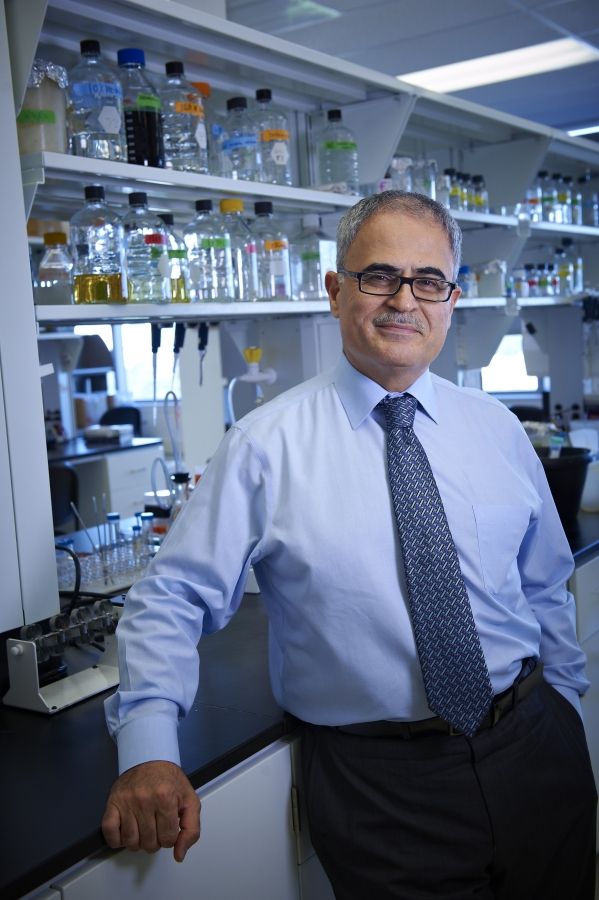The Aids causing virus has been wiped out for the first time in living animals, meaning an actual cure is on the horizon.
It marks a critical step towards a possible cure for humans. A clinical trial could start within a year.
Current HIV treatment focuses on the use of ART (antiretroviral therapy). This suppresses HIV replication but does not eliminate the virus from the body.
Therefore, ART is not a cure for HIV, and it requires life-long use. If it is stopped, HIV rebounds, renewing replication and fueling the development of AIDS.
Now mice infected with HIV which causes the disease have had it eliminated from their DNA using a revolutionary gene-editing tool.
Senior investigator Professor Kamel Khalili, an AIDS expert at Temple University in Philadelphia, said: “Our study shows treatment to suppress HIV replication and gene editing therapy, when given sequentially, can eliminate HIV from cells and organs of infected animals.”
His team used a technique called CRISPR-Cas9 that can snip faulty DNA with a harmless virus. It has been likened to a pair of ‘molecular scissors’.
It combines this with a recently developed therapeutic strategy known as LASER (long-acting slow-effective release) ART.
It targets viral ‘sanctuaries’ – maintaining HIV replication at low levels for extended periods of time. This also reduces the frequency of treatments.
The long-lasting medications were made possible by pharmacological changes in the chemical structure of antiretroviral drugs.
HIV rebound is directly attributed to the ability of the virus to integrate its DNA sequence into the genomes of cells of the immune system, where it lies dormant and beyond the reach of antiretroviral drugs.
In the study published in Nature Communications the modified drug was packaged into nanocrystals, which readily distribute to tissues where HIV is likely to be lying dormant.
From there, the nanocrystals, stored within cells for weeks, slowly release the drug.
Dr Khalili explained: “We wanted to see whether LASER ART could suppress HIV replication long enough for CRISPR-Cas9 to completely rid cells of viral DNA.”
To test their idea, the researchers used mice engineered to produce human T cells susceptible to HIV infection.
This permitted long-term viral infection and ART-induced latency. Once infection was established, mice were treated with LASER ART and subsequently with CRISPR-Cas9.
At the end of the treatment period, mice were examined. Analyses revealed complete elimination of HIV DNA in about one-third of HIV-infected mice.
Dr Khalili said: “The big message of this work is that it takes both CRISPR-Cas9 and virus suppression through a method such as LASER ART, administered together, to produce a cure for HIV infection.

“We now have a clear path to move ahead to trials in non-human primates and possibly clinical trials in human patients within the year.”
Just over a generation ago the world was in the grip of AIDS hysteria. Thanks to modern drugs the picture has transformed.
Today it’s more akin to a long-term condition than a certain death sentence and the number of new infections are declining in most parts of the world.
Earlier this year health secretary Matt Hancock promised by 2030 there would be no new cases of HIV in England. President Donald Trump has made a similar pledge for the US.
Co senior investigator Dr Howard Gendelman, of Nebraska University, who developed LASER ART, said: “This achievement could not have been possible without an extraordinary team effort that included virologists, immunologists, molecular biologists, pharmacologists, and pharmaceutical experts.
“Only by pooling our resources together were we able to make this groundbreaking discovery.”
In previous work, Dr Khalili’s team used CRISPR-Cas9 technology to develop a novel gene editing and gene therapy delivery system aimed at removing HIV DNA from genomes harboring the virus.
In rats and mice, they showed that the gene editing system could effectively excise large fragments of HIV DNA from infected cells, significantly impacting viral gene expression.
Similar to ART, however, gene editing cannot completely eliminate HIV on its own. The researchers now believed they have solved the problem.

